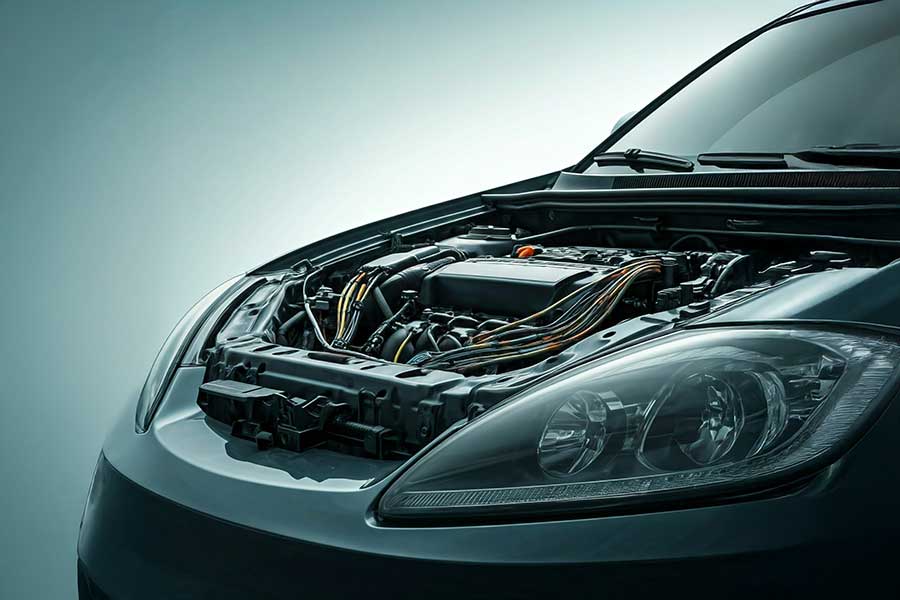
Today's cars have evolved into mobile computers equipped with complex electronic systems. In order for these systems to function flawlessly, a vital network that transmits signals and power is needed, i.e. cables. Cables used in the automotive industry must withstand harsh conditions, provide reliable connections, and support increased data transmission speeds. In this article, we will take a closer look at what automotive cables are, their types, features, standards, future trends, and the solutions offered by Ülkü Kablo.
The Importance of Automotive Cables
Automotive cables form the backbone of the vehicle's electrical and electronic systems. They take part in every point from batteries to headlights, from sensors to control units, from entertainment systems to security systems. Poor quality or incorrectly selected cables can lead to system failures, performance degradation, and even safety risks. For this reason, the automotive industry has set strict standards and requirements for cables.
Automotive Cable Types
The main types of cables used in automotive are:
- Power Cables: They provide power transmission from the battery to the starter, alternator, and other components that require high current. They must have a thick cross-section and a high current-carrying capacity.
- Battery Cables: These are thick and durable cables that connect the battery to the chassis and the starter.
- Starter Cables: These are specially designed cables that transmit high current to the starter motor.
- Ground Wiring: They provide a connection to the ground for the completion of electrical circuits.
- Signal Cables: They transmit signals from sensors, switches, and other control elements to control units. They carry low current and voltage.
- Data Cables: They provide data transmission over networks such as CAN (Controller Area Network), LIN (Local Interconnect Network) and Ethernet. They require high speed and reliability.
- Lighting Cables: Provides power to headlights, turn indicators, interior lighting, and other lighting elements.
- Ignition Cables: They transmit high voltage from the ignition coil to the spark plugs.
- High Voltage Cables (Electric and Hybrid Vehicles): They transmit high voltage and current to the electric motor and battery. They require special insulation and safety measures.
Features of Automotive Cables
Automotive cables are specifically designed to withstand harsh environmental conditions:
- High Temperature Resistance: Cables used in places exposed to high temperatures, such as the engine area, should be made of materials resistant to high temperatures.
- Vibration Resistance: They must be resistant to vibrations that occur while the vehicle is moving.
- Chemical Resistance: They must be resistant to oils, fuels, salts, and other chemicals.
- Abrasion and Impact Resistance: Durable materials should be used to protect the cables against external factors.
- Flexibility: Cables need to be flexible enough so that they can be easily laid and stretch with moving parts.
- Flame Retardancy: Flame retardant materials should be used for fire safety.
- EMC (Electromagnetic Compatibility): Appropriate shielding and bending techniques should be used to minimize electromagnetic interference.
Automotive Cable Standards
There are many international standards for automotive cables:
- ISO 6722: Road vehicles - Low voltage cables
- JASO D611: Japanese automotive standards
- SAE J1128: American automotive standards
- LV112: German automotive standards
These standards determine the electrical, mechanical, and environmental properties of cables.
Future Trends
Technological developments in the automotive industry also bring new trends in cables:
- Higher Data Rates: Higher data transmission speeds are required for autonomous driving, advanced driver assistance systems (ADAS), and in-car entertainment systems. This will increase the use of cables with higher bandwidth (e.g., Ethernet cables).
- Lighter Cables: Lighter and thinner cables are being developed to improve fuel efficiency.
- Smart Cables: Smart cables that contain sensors and electronic circuits can offer additional functions such as diagnostics and data collection.
- High Voltage Cables for Electric and Hybrid Vehicles: With the widespread use of electric and hybrid vehicles, the use of special cables that can carry high voltage and current will increase.
Result
Automotive cables are an indispensable part of modern vehicles. Their reliability, performance, and safety are critical to the overall performance and safety of vehicles. With the technological advancements in the industry, cables are also expected to continuously evolve and meet new requirements. Therefore, automotive engineers and designers must be careful about the selection and design of cables and follow the latest standards and technologies.
